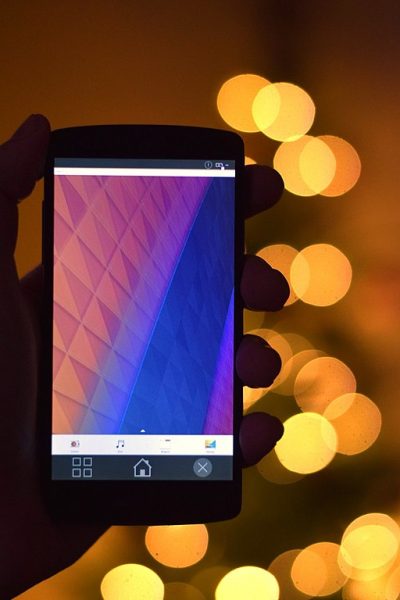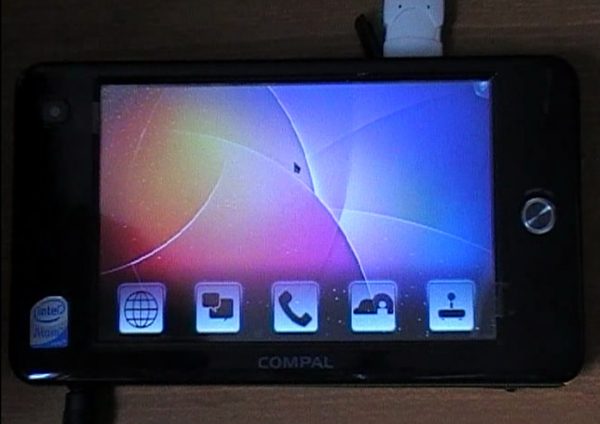Looking for more freedom for your phone? You’re in luck because Plasma Mobile OS is here. This new competition of Ubuntu Touch and Android, this is a free and open-source mobile operating system. This is a project of the K Desktop Environment (KDE) community and it is nothing new for the KDE project.
Before UbuntuTouch was ever released, the KDE community had a long-term vision of convergence. Plasma 5 for the desktop has a “converged shell” that you can switch between different interfaces specifically for different device types. KDE also tried to release tablets with their Plasma software preinstalled, although this never worked out.
What is Plasma Mobile?

Revealed at the annual KDE’s Akademy World Summit, this KDE project pitches Plasma Mobile as a unique operating system. It is different from both the dominant mobile operating system and even different compared to Ubuntu for phones.
Plasma Mobile is entirely free and open-source software. It is user-friendly, privacy-enabling, and customizable platform for mobile devices. You can distribute, modify and re-use this operating system with no restrictions. Development takes place in an open development process meaning anyone can get involved in it. Because it is privacy-enabling, you can choose “services from trusted sources” instead of relying solely on what the developer chooses for you.
Being to personalize and customize the operating system is the biggest feature. This is because KDE has always been much more customizable than other Linux desktops. It is also an inclusive platform that supports a lot of apps.
Compared with Ubuntu for phones, Plasma mobile is trying to support as many different types of apps as possible. This OS’s design has an inclusive system and intends to support all kinds of apps. Developers can write the native apps in QT, the toolkit choice of KDE. Also Plasma mobile will support GTK apps, Sailfish OS apps, Ubuntu Touch apps, and even Android apps. You will definitely have the freedom on your mobile.
Shashlik, a framework for running Android applications on real Linux systems was just shown off at AKademy 2015 and it’s probably not a coincidence. This is because this tool can bring Android apps to desktop Linux, too.
Ubuntu phones, in general, are facing some tough reviews. This is because the operating system lacks native apps, with many of its reviews saying the scopes and web apps just can’t replace the native apps found on other platforms. Supporting a wide range of apps, especially Android apps, could make Plasma Moblie more sustainable in the long run. After all, Microsoft can support Android apps on Windows 10. Although, Android capability didn’t save Blackberry.
What Plasma Mobile and Ubuntu Phones have in Common

The modern images for the Nexus 5 feature Plasma Mobile are running on top of Kubuntu. And this is not just a re-skin of Ubuntu for phones. Developers have built Plasma on top of KDE technologies. These include the KDE frameworks, OT toolkit, and Kwin window manager. This OS even uses Wayland, the display server most of the Linux ecosystem has adopted. Ubuntu for phones uses Mir, claiming that Wayland was unsuitable for its vision of convergence.
Despite these differences, the latest Nexus 5 images share much plumbing with Ubuntu for phones. This even uses the ubuntu-device-flash tool dedicated to flashing images onto the phone. According to the Plasma Mobile team, the current image is an “alternate launcher for Ubuntu touch”.
Overall, Plasma mobile is promising. Linux offers a lot of different desktops environments and it’s only fitting that there should be a variety of competing interfaces for smartphones and other touch devices too. The KDE community has had their eyes on a merger for a long time, so it’s good to see that it’s trying to pursue its own path.
What makes Plasma Mobile Special?

To easily answer this question, Plasma Mobile got everything right. Instead of canonical re-inventing a perfectly functioning wheel, KDE developers simply re-tooled the interface in a way that a full-functioning Linux distribution, complete with every app you’ve grown to love and depend upon that could work on a smaller platform. And Plasma Mobile did an exceptional job. What’s even better is that Plasma Mobile has created an interface that any user of a mobile device could instantly feel familiar with.
What Plasma Mobile interface has to offer are the elements common to most of Android home screens which are:
- App drawer
- Quick Launchers
- Notification Shade
- Overview Button – which will make it easy for you to go back to a previously used app and still running in memory.
- Home Button
Since KDE went this path with the user experience, it means that there’s zero learning curve. Because this is an actual Linux platform, it takes that user-friendly mobile interface and overlays it onto a system that allows for simple installation and usage of apps such as:
- LibreOffice
- Audacity
- GIMP
- Dropbox
- Clementine
- And a whole lot more.
Some drawbacks
Unfortunately, without being able to install Plasma Mobile, you wouldn’t be able to do much, as the live user doesn’t have permission to install applications. However, once Plasma Mobile is fully installed, its Discovery software center will allow you to install a lot of different applications. You just need to swipe up or scroll down, depending on which hardware you’re using, to reveal the app drawer where you can launch all of your installed applications.
You also have the capacity to open up a terminal window where you can take care of a standard Linux admin task, such as using SSH to log into a remote server. Using apt, you have the option to install all the developer tools you need to make Plasma Mobile a powerful development platform. This is some serious mobile power, either from a phone or a tablet.
Plasma Mobile OS Features

Like any other mobile operating system, Plasma Mobile has also distinct features that set it apart from its competitors. Here are those features:
- Freedom: Plasma Mobile is free and open-source software. You can have it free of charge, equipped with the power and licensed rights to change it in any way, to redistribute it and to understand how it works.
- User-friendly: One of the features of this operating system is its user-friendliness. It is designed via an open process, making sure that the requirements and wishes of users are implemented in the best way possible. They’ve studied ergonomics to provide high-quality software and features. And integration across devices is now possible. These are all to provide a rich, stable, and reliable system that helps users get things done efficiently and effectively.
- Privacy: You are sure that Plasma Mobile is secure because it only integrates with services trusted by the user. Other OS depend on their own hardware and operating system vendors, but not Plasma. Plasma Mobile’s software gets audited in an open development process. This includes free and open-source software combined with services chosen from trusted sources.
- Personalization and customization: One of the things that users look for in an operating system is the capacity to customize and personalize their experience. With Plasma Mobile, you have the freedom to do so. It’s built on modularity from the ground up. Everything from the home screen design to the lower-level system components are customizable.
How to Install Plasma Mobile OS
To install the Plasma mobile OS on your phone, you will need to prepare your phone for the installation. There are several ways you can do that depending on the version of your Android phone. But before we begin with the installation of the operating system, here are the things you should do:
Preparing to Install Plasma Mobile OS
To prepare your phone for the installation, the first step is to back up everything you can’t live without before you start. Don’t forget to back up your device memory before installing a new one. This is important especially if something goes wrong or if you changed your mind. Make sure that your device is fully charged before you begin.
You will need to turn on the USB debugging and the OEM unlocking. To do this, you will need to on the “Settings” of your device. If you don’t see the “Developer Options” toward the bottom of the Settings screen, follow the steps below to activate it:
- On your phone Settings, tap the “About Phone” and find the build number. The exact path on where to locate this depends on your phone but you can usually find it with other software information.
- Tap the Build Number seven times. “Developer Options” will appear on the main page of the settings. You may be asked for your security passcode to enable this.
- Go back to see your new developer options. Then, tap “Developer Options”
- Check the enable USB Debugging and OEM Unlocking.
Install Device Drivers on Your Computer
To guarantee that your computer can properly communicate with your device, you will need the appropriate USB driver. Some devices come with the drivers in their phone’s software and all you have to do is to attach your phone to your PC by the USB cable. This usually will automatically install the drivers. If none, you can go to the device’s manufacturer’s website and download the USB driver.
Unlock the Bootloader
Before you can root the device, you need to unlock your phone’s bootloader. The bootloader is the program that loads the phone’s operating system. It is the one that determines which applications run during your device’s startup process.
Some manufacturers will require you to obtain a key to unlock the bootloader. Motorola, HTC, Sony, and LG provide step-by-step instructions on how to do so but will require you to register a developers account. For Honor and Huawei devices, their bootloaders can no longer be unlocked. For owners of these devices, you will need to use DC-Unlocker, a third-party service.
To unlock the bootloader, be sure to already enable the USB Debugging and OEM unlocking on your phone. Then, the standard method is as follows:
- Connect your device to your computer and open a command window.
- On your PC’s command prompt, type: adb devices; you should see a device serial number displayed.
- Boot your device into bootloader mode by typing in this command: adb reboot bootloader
- Unlock the bootloader of your device by issuing this command: fastboot oem unlock. Depending on your Android device, it will prompt you for confirmation, asking if you want to unlock your bootloader. To select yes, just use your volume buttons and the power button to confirm.
- To boot back your device into the system after unlocking the bootloader, simply type in: fastboot reboot
Be mindful that doing these steps will delete all your data and factory reset the device. You can back-up necessary files if you know how to transfer files from phone to computer. You can also opt to upload them to a cloud storage provider.
Your bootloader is finally unlocked and you can now continue to install Plasma Mobile OS.
Installing Plasma Mobile
Now that you’ve unlocked your device, you can now go ahead and install the operating system. Now you need to get the latest version of KDE Plasma Mobile on your device. To do this follow the steps :
- Using the same root terminal, type in “fastboot format cache”. This is crucial otherwise the OS won’t start. This step will clear the device’s cache partition.
- After this, clear the user data partition, type in “fastboot format userdat”. With the required partitions formatted, you can install the OS. Clone the source code to your PC. Type in: “git clone https://github.com/plasma-phone-packaging/pm-flashtool.git”.
- Then, enter the source directory with the cd command “cd pm-flashtool”.
- You now need to start the flashing process, type in “./pm-flash -p neon”. This process, including the first boot, may take a little more time. Please be patient and do not turn off your device. No, your device is not broken. Just keep in mind that installing new firmware to an Android device, especially one that’s based on Linux takes time.
Where can you find Plasma Mobile OS
If you want more information about this operating system such as in-depth installation instructions, visit the Plasma Mobile Wiki and the Plasma Mobile website. You can also find the code for various Plasma Mobile components on git.kde.org.
